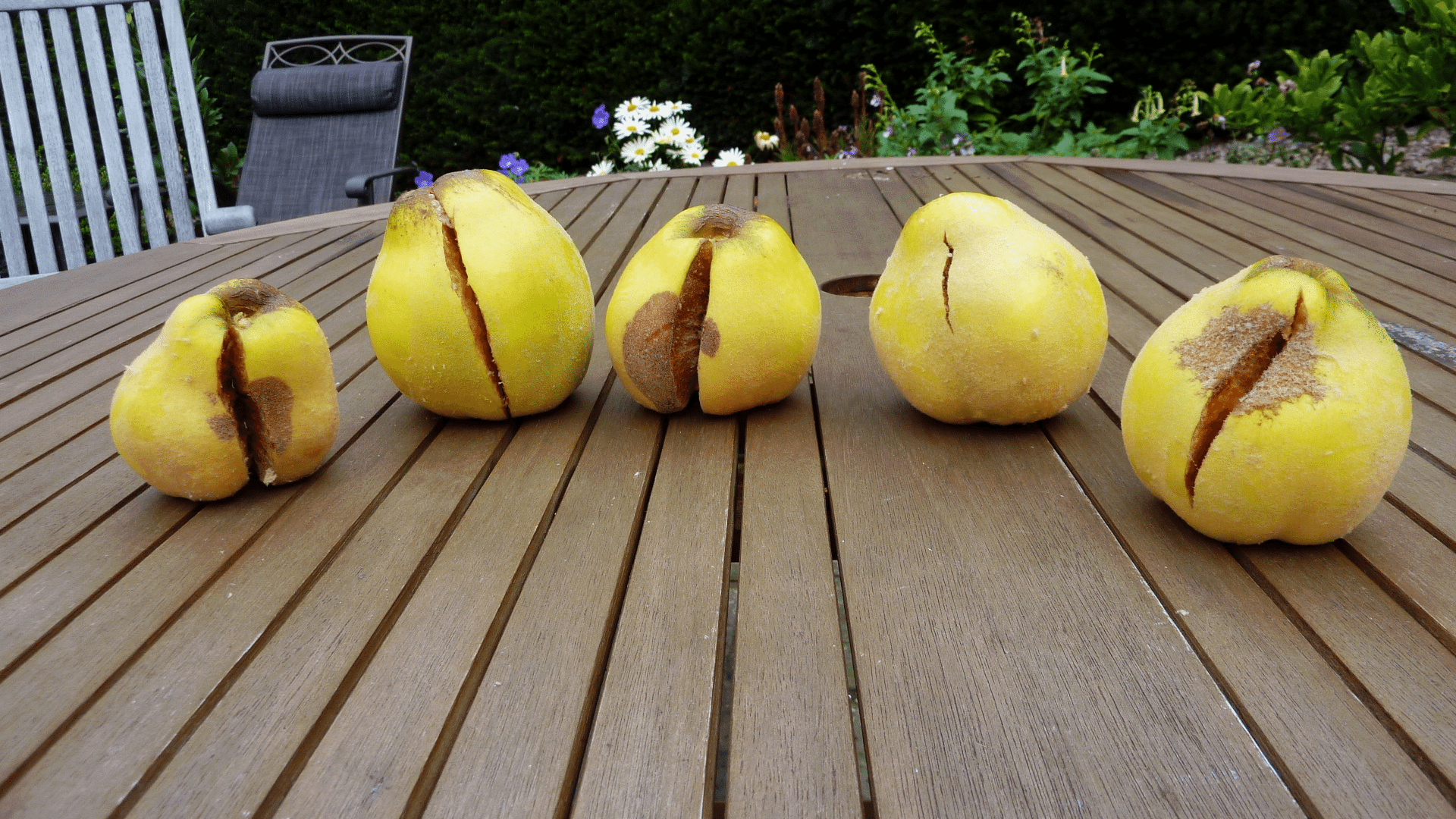Quince Fruit Split: Why Is My Quince Fruit Cracking


If your quince fruit is cracking, you are not alone. Quince fruit split is not uncommon. It happens where one or more quinces split, creating openings through which diseases and pests can attack otherwise healthy fruit. Quince fruit split is a condition often caused by water supply issues. Read on for more information about the causes for splitting quince fruit.
Quince Fruit Tree Problems
Quince are small, irregularly shaped trees that grow to some 15 feet (5 m.) high. They bear dramatic flowers on the tips of the shoots in hues of white or bright pink. Quince trees are hardy in USDA plant hardiness zones 5 to 9. Quince trees are vulnerable to various quince fruit tree problems, including:
The fruit itself can suffer from quince fruit split. In fact, fruit split in quince is quite common. If your quince fruit is cracking, you are probably wondering about causes for splitting quince fruit. Note that quince fruit split is neither a disease nor a reaction to a pest infection. It is caused by the tree’s growing conditions.
Causes for Splitting Quince Fruit
Water is one of the primary causes for splitting quince fruit – an irregular supply of water. Quince fruit split often occurs when there is a long dry period followed by abundant rain. The sudden generous water supply causes the fruit to swell too quickly and crack. Given that rainfall is outside a gardener’s control, it isn’t easy to make sure your quince trees have a steady supply of water. One thing you can do is to take steps to hold the irrigation in the soil longer. You do this by incorporating well-rotted organic matter into the soil when you plant. This is important because organic compost assists the soil to hold onto moisture, thus making it available for the plant during dry periods. Mulching is another way you can help soil retain water. Layer about 2 inches (5 cm.) of garden compost over the root area of the tree, keeping it away from the trunk and foliage. The mulch disintegrates into the soil in time, improving it. In the meanwhile, mulch helps prevent quince fruit tree problems and, specifically, fruit split in quince by retaining moisture in the root area. Apply the layer of mulch after the spring rains.
Sign up for the Gardening Know How newsletter today and receive a free copy of our e-book "How to Grow Delicious Tomatoes".

Teo Spengler is a master gardener and a docent at the San Francisco Botanical Garden, where she hosts public tours. She has studied horticulture and written about nature, trees, plants, and gardening for more than two decades, following a career as an attorney and legal writer. Her extended family includes some 30 houseplants and hundreds of outdoor plants, including 250 trees, which are her main passion. Spengler currently splits her life between San Francisco and the French Basque Country, though she was raised in Alaska, giving her experience of gardening in a range of climates.